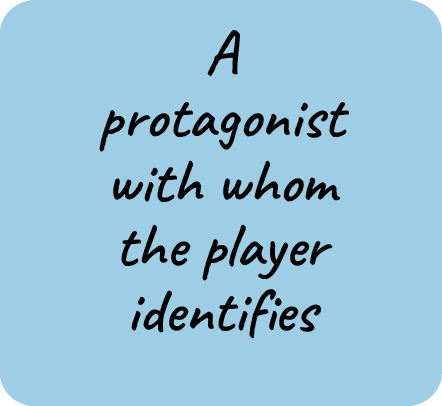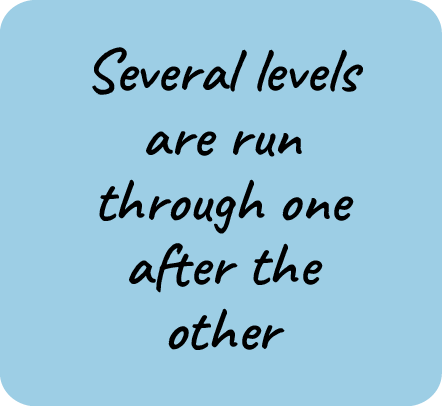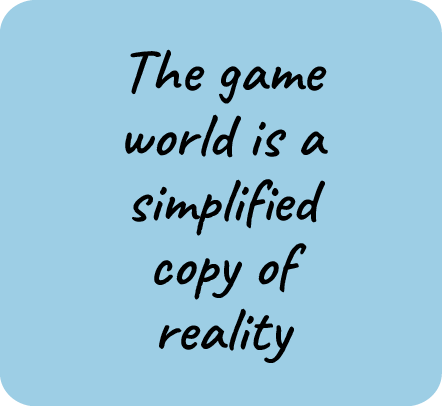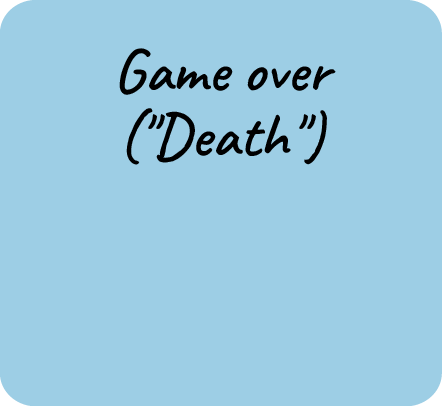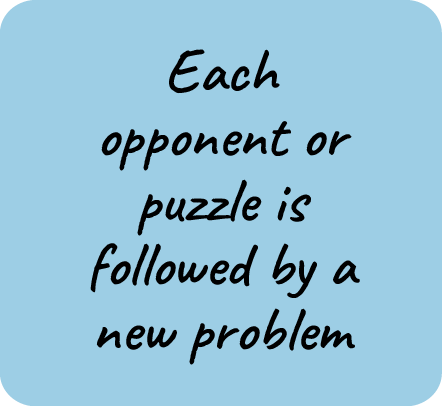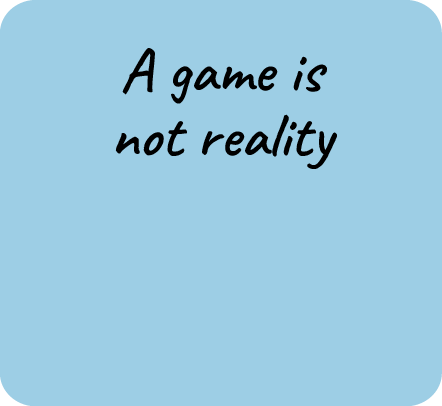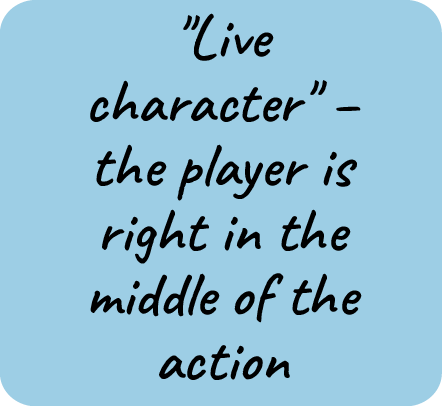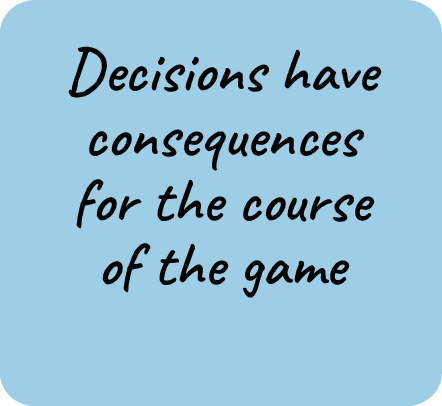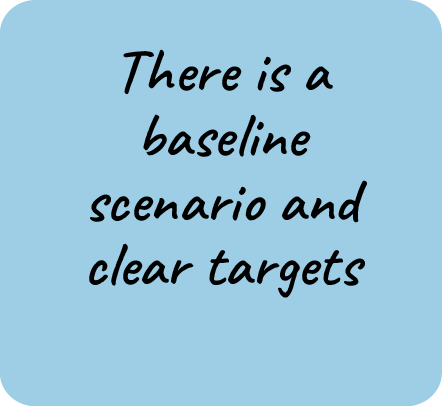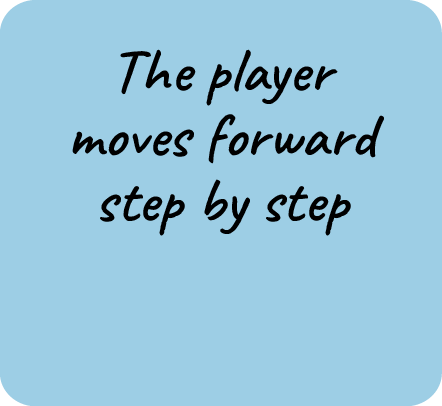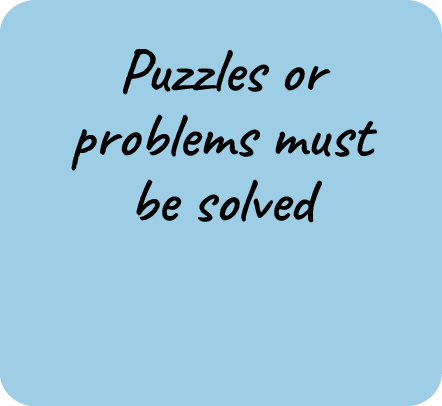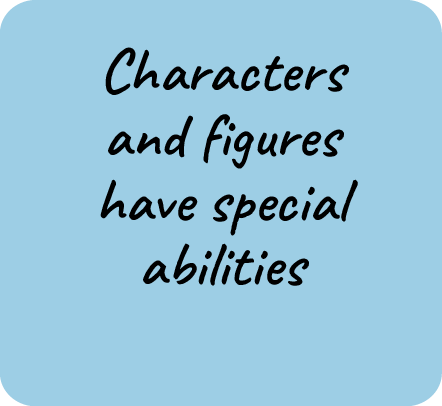Film and computer games
Comparing the characteristics of computer games with the narrative style of a film
Run Lola Run is a brilliant display of visual and acoustic stylistic devices. Some critics have often compared the film with the popular music videos of the 90s, but not all of them:
Film critics have called Run Lola Run a ‘music video stretched to the length of a feature film’. That’s not quite right. In its technical and narrative structure, the film does not make use of the conventions of the music video. Rather, what American critics in particular have written is true: it is a computer game translated onto the cinema screen.
Roser, Traugott: „Lola rennt“ oder: Drei vergebliche Versuche über Eindeutigkeit. Magazin für Theologie und Ästhetik 8/2000
Task 1
- Sum up Traugott Roser’s ideas in your own words.
- Write down examples from the film that support Roser's ideas.
Task 2
It can be argued that Run Lola Run is strongly oriented in its design towards the major media of its contemporary youth and pop culture. In addition to techno music and the music channels VIVA and MTV, computer games in particular were extremely popular with young people in the 1990s.
Key concepts: Computer games of the 1990s
Popular game genres of the 90s:
- Shooter (e.g. Doom, Half-Life, Quake): From the first-person perspective, other players (multiplayer) or computer opponents (single player) are fought in a game world with firearms.
- Action-adventure (e.g. Lara Croft, The Legend of Zelda: Ocarina of Time, Pokémon): The player controls their character in a level-based game world and has to complete tasks and solve puzzles as well as demonstrate skill, e.g. overcome obstacles and defeat opponents.
- Racing games (e.g. Need for Speed, Gran Turismo): Simulation of a car race in which the player controls a vehicle that is as realistic as possible and competes against other players or the computer.
- Real-time strategy games (e.g. Anno 1602, Sid Meiers’s Civilization): Development game in which several players usually compete against each other and carry out construction and development tasks in real time. Often the goal is to crush the enemy, by achieving economic and technological intermediate goals determining the effectiveness and equipment of one's own troops.
- Jump-’n’-runs (e.g. Super Mario, Crash Bandicoot): Game in which the character moves through a game world, running and jumping. A distinction is made between 2D variants in which the character moves through a horizontally-scrolling environment and 3D variants in which the character moves through a three-dimensional environment.
- Role-playing games (e.g. Diablo, Final Fantasy): The player moves through a complex plot within a fantasy game world using a game character they have designed.
Key concepts: Main features of computer games
Interactivity: The player's decisions determine the course and results of the game individually. A victory is harder to achieve than a defeat.
Level structure: A fixed structure determines the game. The sequence of game events is determined independently of the player to a certain extent, e.g. in progression games: you only get to the next level when the previous problems have been solved (in some cases the order is also fixed here).
Rules: These are clearly defined and accepted by the players. Manipulation rules (that determine which actions are possible) and goal rules (that define what has to be achieved) are communicated to the player as quests.
Repetition option: Each player can repeat a game as often as they like and try out different game sequences. This allows them to learn in order to get to know and master the challenges of the game better.
Security: The consequences of losing are not that bad for players in the real world.
Richter, Angelika: Klassifikationen von Computerspielen
Below you can see a number of features that many computer games usually have.
- Select by tapping on the following cards those characteristics that apply to the film Run Lola Run. Colour in partially applicable characteristics half blue and fully applicable characteristics completely blue. Leave non-applicable features grey.
- Evaluate the extent to which the different computer game characteristics in Run Lola Run come into play. Select from the gallery several properties that seem particularly important to you and arrange them on
the workspace. You can weight the relevance of the properties by changing the size of the cards.
Use note cards to describe how the film Run Lola Run uses the selected properties of computer games.
- Can you suggest why filmmaker Tom Tykwer might have set up Run Lola Run like a computer game? Take into account the special characteristics of computer games in your explanations. How might you interpret the computer game as a metaphor for life?
- Could you argue that Run Lola Run should be compared to a modern fairy tale rather than a computer game?
